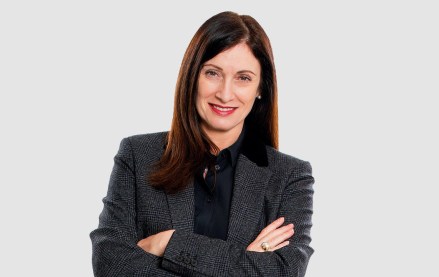Media Buying Briefing: Here are five media agency trends to watch in 2024

This Media Buying Briefing covers the latest in agency news and media buying for Digiday+ members and is distributed over email every Monday at 10 a.m. ET. More from the series →
With 2023 pretty much in the rearview mirror, it’s time to think about the major issues the media agency world will have to mull, tackle, and own in 2024.
There’s a lot of change the industry has had to absorb this year – the promise of cookies actually going away, the rise of yet more connected TV options, greater scrutiny on the major digital/social platforms and last but not least the meteoric rise of generative AI into our lives.
Underpinning these issues below are two horizontal challenges the industry faces: a continued march toward in-housing by marketers, and marketers’ increased efforts to directly connect with their consumers.”
“Advertisers, even those enlisting the expertise of agencies, are drawing on deeper and often more direct relationships with their customers. This is especially true of the automotive and media and entertainment sectors, disintermediating customer marketing and allowing for more personalized messaging (where consented/logged in),” noted Kate Scott-Dawkins, president of business intelligence at GroupM, in her early December forecast of the year that was and what’s to come.
Here’s a rundown of the five major issues we see media agencies facing and addressing in 2024.
Generative AI
It’s safe to say that we haven’t heard the last of artificial intelligence in advertising. From chatbots to internal platforms, agencies and their clients are going to continue experimenting with generative AI and pushing its potential. This year, we saw the launch of different content creation tools, campaign optimizations and internal training and engagement within organizations. In 2024, we can expect to see more AI experimentation and investments as firms try to carve out their specialties – while potentially seeing more brand safety consideration and transparency or disclosures on AI-produced media.
“Expect generative AI to become more pervasive across each link of the programmatic supply chain, creating operational efficiencies – while reducing performance lag and spending waste,” said Jeremy Haft, chief revenue officer at Digital Remedy. “Emerging AI tools will bring flexibility to the way [brands’] insights are queried and applied in ways that weren’t possible before with standard machine learning capabilities.”
Commerce media/retail media networks
One of the fastest growing new segments in media, retail media networks grew nearly 10% in 2023 to $119 billion, according to GroupM’s Scott-Dawkins, who sees the segment growing another 8.3% in ’24 to $12 billion. The headlong rush of retailers to get into the game didn’t abate in 2023, with the likes of United, Dollar General, Microsoft, Chewy and others jumping into the game.
What’s needed now is a stronger push toward standardization in measurement and terminology of the segment, said Kristi Argyilan, of Albertsons Media Collective, one of the larger RMNs out there – and organizations including the IAB are working toward that. The agency holding companies, meantime, have ramped up their commerce media and retail media network expertise, including Omnicom and IPG this year. But even independent agencies or mini-holdcos are getting in the game, while DSPs race to get their piece of the pie through programmatic offerings.
Data/cookie deprecation
We’ve been talking about moving toward third-party cookie deprecation for a few years, and 2024 could finally bring the beginning of the end. Agencies have been preparing for this change for years by adding privacy and data tools – now Google’s disabling of third-party cookies for 1% of Chrome users in Q1 will set that transition in motion.
“They’re pushing along the lines of Google Analytics in universal analytics… Like even your old data – if you don’t move it over, it is all going away over the next couple of months,” Michael Neveu, senior director of machine learning and AI solutions for Media.Monks, recently told Digiday.
Meanwhile, new advances in measuring effectiveness and outcomes, including attention and ID alternatives, hope to offer insights that help media agencies get their clients closer to the holy grail that John Wanamaker talked about so many years ago – knowing which half of their advertising actually works. And with even Netflix recently offering a peek behind its data curtain, the industry can sort through the mess that is connected TV a bit more effectively.
Influencer marketing
Agencies can expect to see the growing use of generative AI across influencer marketing on social media. With so many platforms and channels, some agencies are developing new brand and influencer metrics in order to measure ROI and impact. Another emerging area is social commerce and retail on social platforms, which are increasingly turning to content creators and influencers to promote brands. As more shopping happens on social, agencies and clients will continue exploring new areas like live shopping and more ways of engaging with Gen Z and Gen Alpha audiences.
Rebundling?
Finally, as Digiday reported just last week, the use of attention as a measurement tool is unintentionally moving the creative and media sides of the agency world back together again. Holding company strategies aside, that can only be good for marketers, who need to make their ad efforts as successful as possible in an uncertain economy. Across the spectrum of independent agencies, from Worldwide Partners’ reverse holdco model to Crossmedia joining forces with creative shop Joan to pitch together, there’s a growing realization that the age of separate media and creative functions is coming to an end.
The blurring of brand and performance goals of advertisers is helping to break down the separation of the two sides, as is the increased sophistication of influencer and creator content that serves up marketing messages as well. Finally, the financial pressure on holding companies that are highly leveraged might also push a further collapsing of agency brands. Look no further than the merging of VMLY&R with WundermanThomson at WPP, two already mashed-up agency groups.
Color by numbers
Pixability’s annual U.S. media agencies study indicates a resiliency in spending on YouTube and CTV budgets, despite economic uncertainty in 2024. Agencies also shared their spending predictions for TikTok, Facebook/Instagram and linear TV.
- 96% of agencies said clients will maintain or increase YouTube spending in 2024, with 48% saying steady budgets and 48% saying increasing budgets.
- CTV should see the most growth, with 65% of agencies expecting an increase in budgets. By contrast, 10% of respondents said there will be an increase in linear TV spending – 36% said it will decrease.
- TikTok will continue growing, with 43% saying spending on the social app will increase next year, compared to 28% expecting an increase on Meta platforms.
Takeoff & landing
- Independent powerhouse PMG accelerated its reach outside North America with the purchase of RocketMill, an independent full-service digital agency based in the U.K., giving it a European foothold.
- GroupM successfully defended insurer Allianz’s global media business, and several GroupM agencies share duties: incumbent EssenceMediacom will handle nine markets, Mindshare will lead the business globally and in two thirds of markets, and mSix&Partners will handle Germany, where the client is headquarted.
- Media platform Teads added carbon emissions reporting on CTV and omnichannel campaigns from sustainability firm Scope3 into its Ad Manager product.
- Personnel moves: Crossmedia hired Neil Smith to be its first chief growth officer … Contextual ad firm Seedtag hired Chad Schulte as svp for U.S. agency partnerships & strategy.
Direct quote
“Retail media is that third revolution in digital media – the first being search and the second social.”
— Jared Belsky, CEO of independent agency network Acadia.
Speed reading
- Kayleigh Barber dug deeper into reports out of the recent Programmatic Summit that Google was invalidating impressions and clicks from DSPs, but found not many agencies shared that POV.
- Antoinette Siu caught up with Stagwell Marketing Cloud’s first CEO Elspeth Rollert to find out where she will prioritize growth for the unit.
- Alexander Lee looked ahead to what mergers might be expected in the world of esports, in light of G2’s strategic partnership with Version1.
Editor’s Note: Digiday’s Media Buying Briefing will be taking a break over the holidays. Our next installment comes out Jan. 8, 2024.
More in Media Buying

Omnicom confirms the pending exit of influential Annalect chief Slavi Samardzija
The CEO and architect of Omni departs, hinting at pending changes as Omnicon continues $13.5 billion IPG takeover bid.

WPP has its next CEO – but what do clients make of the heir apparent?
The ad industry’s hot take industrial complex went into overdrive upon yesterday’s WPP coronation. Clients are keeping their counsel, however.

Who is Cindy Rose, WPP’s insider-outsider pick for its next CEO?
The British holding company has named its next CEO — a Microsoft executive and board member of six years.








